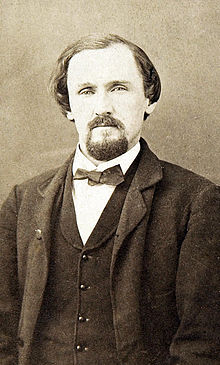Concord and the Civil War: From Walden Pond to the Gettysburg Front by Rick Frese. History Press, 2014. Paper, ISBN: 1626192944. $19.99.
 Rick Frese’s Concord and the Civil War: From Walden Pond to the Gettysburg Front tells the story of the Civil War era from John Brown to Lincoln’s death with Concord, Massachusetts, at the center. This local history focuses on all citizens of Concord, from the heralded names of Thoreau, Alcott, and Emerson to the lesser-known Melvins, Dugans, and Prescotts. Frese’s book chronicles their daily lives in an effort to highlight the contributions of Concord to both the Union war effort and the abolition of slavery.
Rick Frese’s Concord and the Civil War: From Walden Pond to the Gettysburg Front tells the story of the Civil War era from John Brown to Lincoln’s death with Concord, Massachusetts, at the center. This local history focuses on all citizens of Concord, from the heralded names of Thoreau, Alcott, and Emerson to the lesser-known Melvins, Dugans, and Prescotts. Frese’s book chronicles their daily lives in an effort to highlight the contributions of Concord to both the Union war effort and the abolition of slavery.
The book opens with a very useful review of important anti-slavery and abolitionist activity in Concord. Frese skillfully weaves the national saga leading up to the Civil War with Concord’s own rich history of antislavery activism. The central chapters deal with Concord during wartime – each chapter roughly correlating to one year of the war, and each offering a surprising amount of personal accounts and anecdotal evidence. Frese pays particular attention to the close connections between Concord and Boston, effectively illustrating the complex web of social relationships in the North during the Civil War. The book’s final chapters cover the end of war and Concord’s memorials to both its veterans and the fallen president.
Frese is a fantastic storyteller, and this talent is most apparent when the book discusses the individual Concord soldiers and their battlefield experiences. Whether recounting the service of Colonel George Prescott, the Concord veteran who commanded the Ancient and Honorable Concord Artillery, or the trials of Louisa May Alcott during her time as a Union nurse, Frese paints vivid pictures of Civil War life and death – and succeeds in situating these incredible stories within the wider narrative of the war.
A tremendous amount of work went into this project, and while the book is slender, it is densely packed with primary materials of value. Battlefield statistics, quartermaster’s reports, journal entries, town budgets, meeting minutes, lectures, and eulogies all serve to make Frese’s story both compelling and informative. The only fault here is the lack of citation for many of these sources, leaving readers and scholars interested further examination of these documents without a clear roadmap to follow.
A book that takes on a subject this broad in such a small compass will no doubt have some shortcomings. Many of the transitions from section to section – and sometimes even chapter to chapter – are jolting. Also, while Frese is clearly very knowledgeable on the military technology and battlefield tactics of the time, the sections that deal with these subjects always seem awkwardly tacked on, never truly finding a place in the larger story. But these are minor shortfalls in what is an otherwise carefully researched and skillfully written work. This book will certainly add to the growing number of local studies and micro-histories of the Civil War era, and it will speak to readers and researchers across a wide variety of subject areas.
Tyler Sperrazza is a graduate student of History and African American Studies at The Pennsylvania State University. His research focuses on theater and popular culture during the Civil War and Reconstruction.

